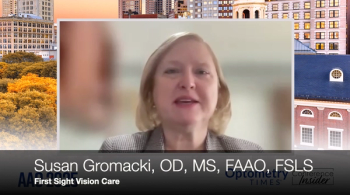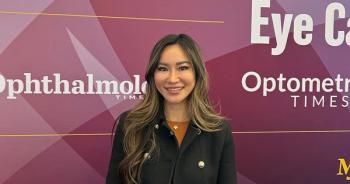
AAOpt 2022: A collaborative approach to pediatric keratoconus offers positive patient outcomes
Christina Twardowski, OD, FAAO, and Erin D. Stahl, MD, share highlights from their discussion titled, "A collaborative approach to pediatric keratoconus," which they presented during the 2022 American Academy of Optometry meeting.
The 2022 American Academy of Optometry meeting is taking place this year in San Diego. Drs. Christina Twardowski and Erin Stahl share with Optometry Times® key highlights from their discussion, "A collaborative approach to pediatric keratoconus," which they presented during the meeting.
Christina Twardowski, OD, FAAO, is program director for the Children's Mercy Pediatric Optometry Residency Program, as well as clinical assistant professor of ophthalmology at the University of Missouri-Kansas City School of Medicine, and Erin D. Stahl, MD, a pediatric ophthalmologist who serves as the Division Director of Ophthalmology and the Associate Chair of Surgery at Children's Mercy Kansas City, as well as professor in the Department of Ophthalmology at the University of Missouri - Kansas City School of Medicine.
What are the key takeaways from the presentation?
- There is no bad referral - Many times, doctors believe they should hold onto a patient until a diagnosis can be confirmed. Pediatric keratoconus can progress rapidly which means waiting for certainty on the diagnosis can result in permanent vision loss. Any suspicion for keratoconus warrants a referral.
- Use your retinoscope - Doctors often attempt secondary testing to help confirm the diagnosis of keratoconus. When dealing with children, testing attempts are frequently unsuccessful secondary to patient cooperation. Retinoscopy is a tool we all have and can confirm the diagnosis of keratoconus on any aged patient.
- Optical treatment AND medical treatment are required - Being able to provide your pediatric keratoconus patients with both treatments is imperative for a successful vision and ocular health outcome. Collaboration between optometry and ophthalmology is key in meeting the expectations of the family and providing long-term vision success.
Why is this so important for optometrists to address?
Optometrists tend to be the first at seeing and diagnosing keratoconus patients. Pediatric keratoconus may not be a diagnosis that comes into your office every week but understanding the severity of condition and the required treatment that is needed for these patients will help guide your decisions for the future.
What does this mean for patient care?
Early detection and treatment are paramount to avoid serious visual impairment. Corneal cross-linking offers a true treatment for keratoconus, halting the corneal changes and avoiding the gamut of visual rehabilitation options. Pediatric patients with keratoconus require early diagnosis, careful examination, and early intervention by CXL to ensure a positive visual prognosis.
Newsletter
Want more insights like this? Subscribe to Optometry Times and get clinical pearls and practice tips delivered straight to your inbox.



















































.png)


